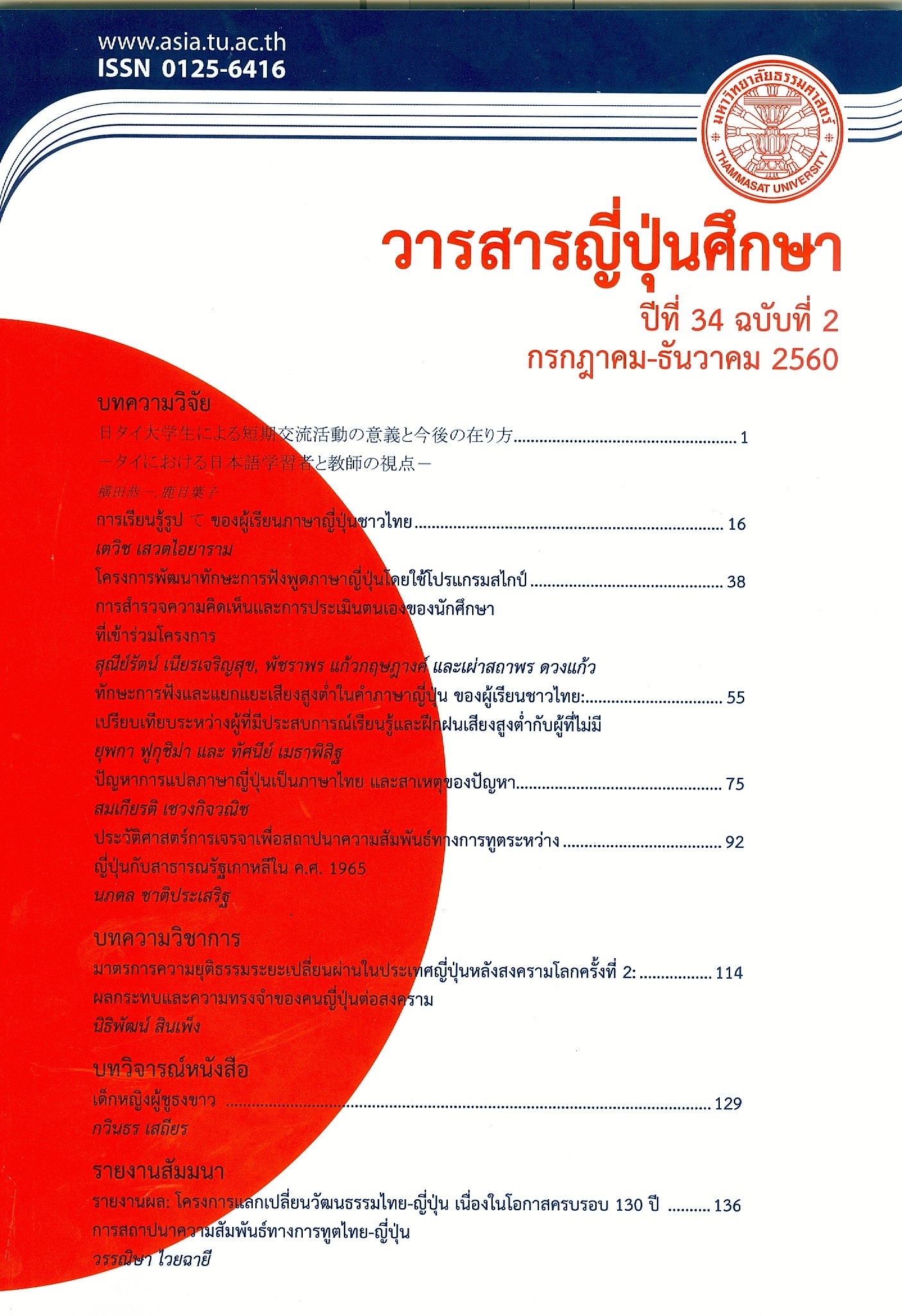Acquisition of te form by Thai Learners of Japanese
Keywords:
te inflections, Verb types, Thai learners, Verb completion taskAbstract
This present study investigates how Thai basic learners acquire the acquisition order of te form and which factors have an impact on the learning of te form. Informants were 38 students at a basic level. 48 different verbs (12 verb types, 4 words for each type) were selected to ask these learners to complete a verb completion task. The data were then analysed by Decision Tree. Analysis indicates that the verbs which end with the – u type and – tsu type were most performed in te inflections and the most difficult te inflections were the verbs which end with the – ru type, – iru type and – kuru type. The study concludes that there are a lot of Japanese verbs that end with the – ru sound and this made Thai learners confused. To resolve this problem, the learners tried to generate some principles such as deleting – ru and put tte at the end of a verb to conjugate the te form or using their background knowledge which gained from reading a text or hearing their teacher’s use in the classroom.




